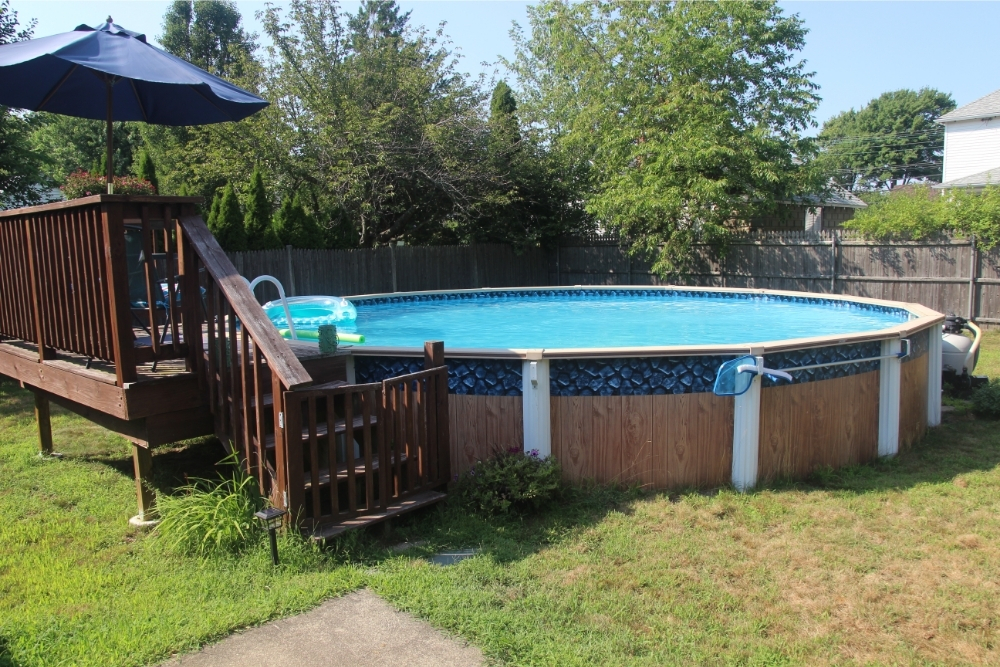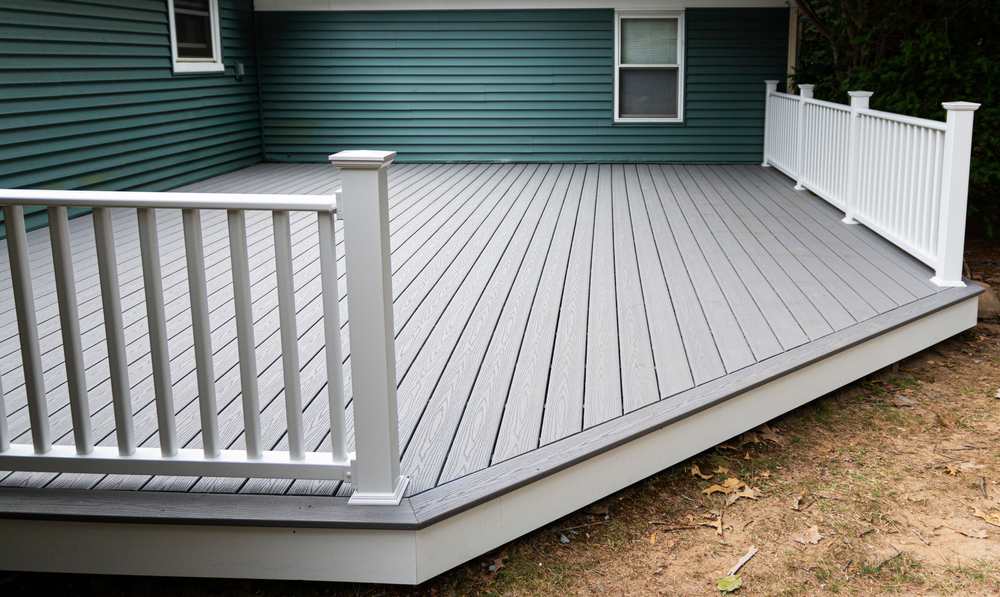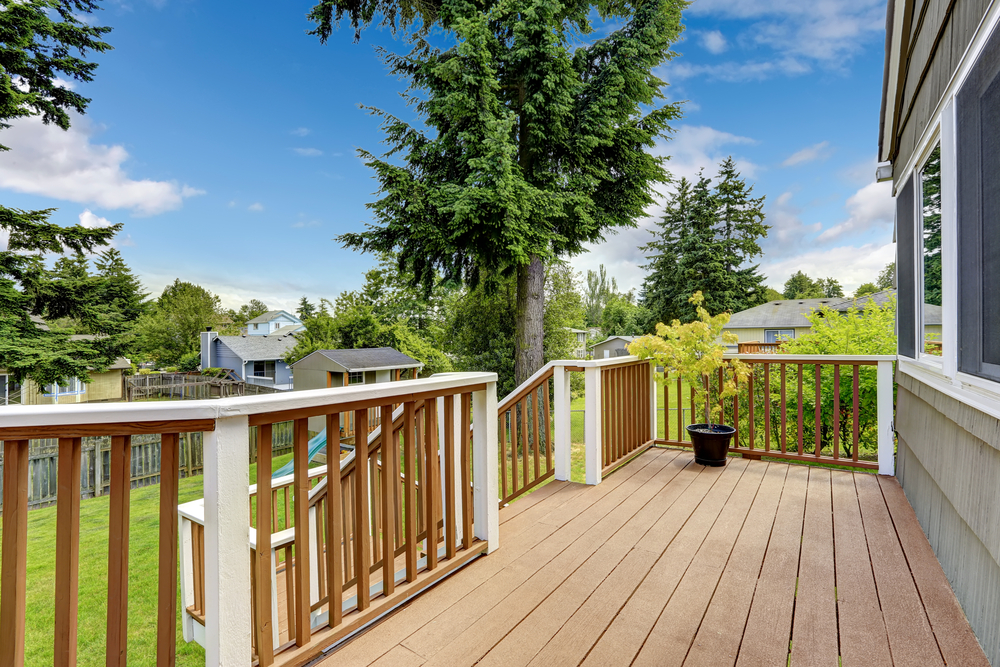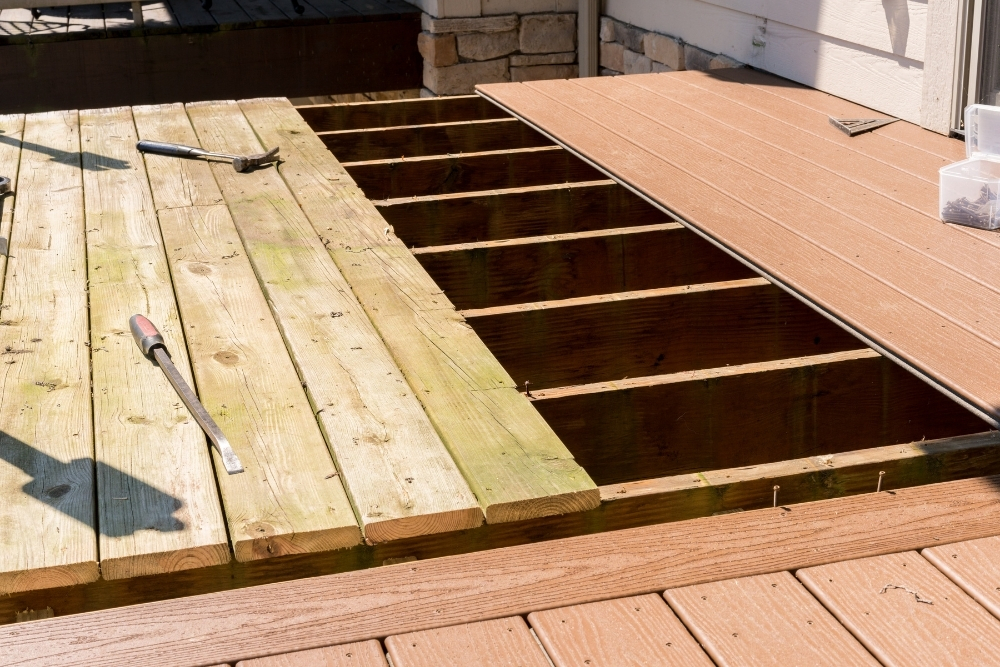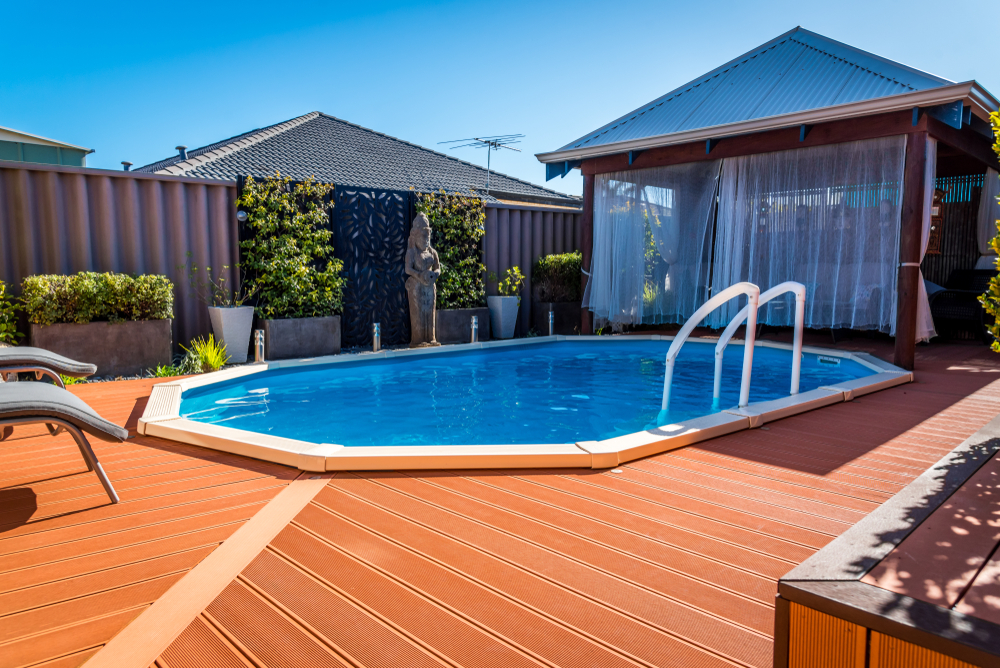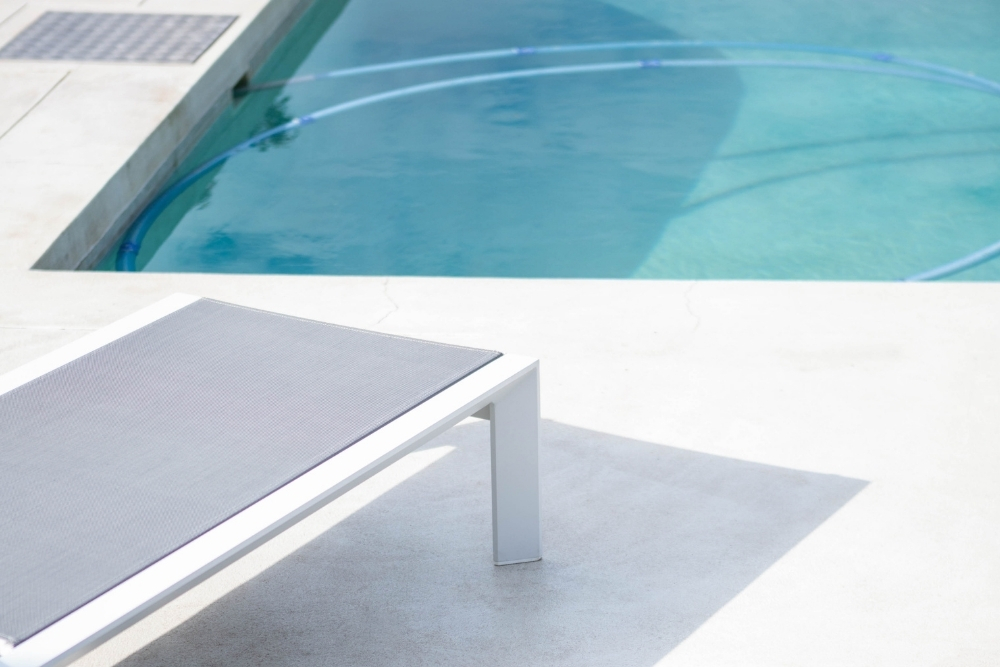A deck around a pool is essential. Not only does it prevent mud and grass from entering the pool every time someone jumps in, but a good deck will also look excellent and acts as a great safety feature.
Problem is – it’s not always easy to find the right material for a pool deck. You’ve got concrete, wood, aluminum, vinyl…the list goes on and on. Each deck option comes with their own advantages and disadvantages, so it can be quite overwhelming to pick the perfect one.
Luckily for you, we’ve got you covered! We understand the importance of choosing the right deck material that will both look good and work well around a pool, which is why we have come up with the best pool decking options to help you pick the right deck!
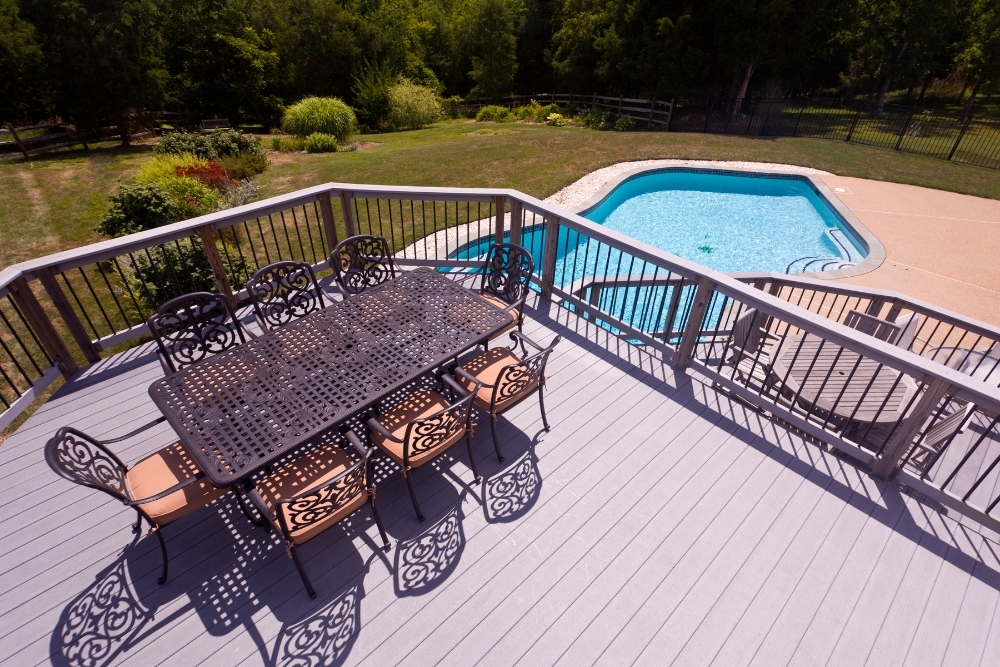
What is the best deck material to use around a pool?
It’s not easy to say what the best deck material to use around a pool is, purely because of the variety of factors that contribute to finding the perfect material. In most cases, people will generally choose cement around their pool.
Here are the key factors to consider when looking for the best deck material around a pool.
Affordability
Most households will have a budget or a ballpark figure when it comes to finding a deck around a pool. Not only do you have to consider the price of the material, but you also have to think about the cost of installation. Will you do it yourself, or hire a professional?
Deck materials like flagstone and brick are hardy and durable, but they are pretty expensive when it comes to the installation. Each piece must be installed separately, making it a time-consuming and labor intensive project.
Plain concrete is usually the cheapest material for a deck around a pool, plus it is fairly straightforward to install.
Slippery surface
The biggest factor to consider is the slip-resistance of the deck material. People will be traipsing their wet feet on the deck as they climb in and out of the pool, not to mention the amount of splashing. The last thing you want is a deck to cause injuries because of the slippery surface.
Wooden decks are generally a no-go around a pool due to the constant exposure to moisture that can cause rotting, but especially for the lack of slip-resistance. Tile also lacks traction, even if it looks attractive.
Cement, flagstone, brick, and any deck with a textured overlay are the best options for providing a slip-resistant surface with traction that will prevent slipping and injuries.
Heat
You know when you get out of the nice, cool pool and your feet immediately scream at you because of the boiling surface of the deck?
Yeah, you’ll want to consider that. Dark-colored decks will retain the heat from the sun for a long time, which results in a lot of burnt feet and running to avoid the pain, leading to injuries.
Cement, again, retains heat pretty well. It reflects solar radiation instead, allowing for a permanent cool-to-the-touch surface.
Appearance
You’re going to want a deck around a pool that you’re proud of. Concrete might not always be the most attractive deck option, unless you opt for a decorative cement material (which we will go into later!). Tiles are usually the most popular option for their appearance, but this material lacks slip-resistance.
Maintenance
Lastly, make sure to consider the maintenance of the deck material. Paving materials are very durable, but they require more maintenance than cement, as they will move and shift over time. Wood decks can stain from the water, not to mention how the constant exposure to water will contribute to rot.
Pool decking options
So, now you know what factors to keep in mind when finding a deck around a pool, but what decking options are available?
Colored concrete
One of the most popular decking options, colored concrete works to create a natural appearance rather than straight-up concrete. Bleaching, chemical stains, and hardeners work to make concrete look more like a natural stone. Colored concrete that is lighter not only looks great next to a pool, but it will also reflect the rays from the sun to resist heat.
Stamped concrete
Stamped concrete is essentially the same as colored concrete, except it involves the printing of marks that would be found on flagstone and paving stones. This is a great option for those who prefer the natural look – plus, it’s far easier to maintain than actual paving stones.
Exposed aggregate
Concrete contains aggregate which can be exposed to look like small pebbles. This is the most slip-resistant material and can come in a variety of color options, which is why you will so often see exposed aggregate around outdoor pools and hotels.
Brick and tile
Brick is possibly the most durable material for a pool decking, and tiles can be the most attractive depending on their design. However, keep in mind that the installation and maintenance of brick and tile decks can be strenuous, not to mention the lack of slip-resistance. Plus, brick and tile can get very hot.
Rock salt concrete
Plain concrete can be easily spiced up with a finish of rock salt. This works by pressing grains of rock salt into concrete that has been recently and freshly paved, and is then washed away.
Not only does it look nice, but a rock salt finish adds more traction to the deck surface. It also looks naturally worn down, which is a good option for those who don’t like the stark appearance of fresh concrete.
Wood
Wooden decks are gorgeous, but entirely impractical. Wood doesn’t work well with constant exposure to water and moisture, nor the chemicals from the pool. Wood is highly prone to rot and decay from moisture, which will only shorten the deck’s lifespan.
Plus, wood decks are a haven for slippery accidents. Sure, a wooden deck might look nice, but remember the color will only last until the UV rays from the sun inevitably bleach the surface.

